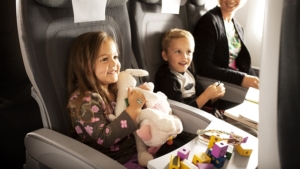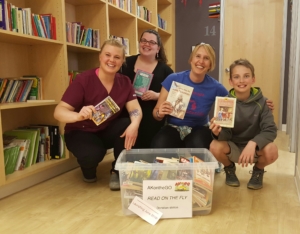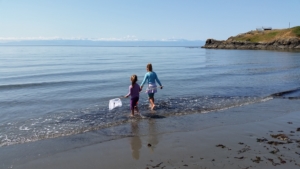FAA reauthorization to include provision for families
In what can be described as the first big legislative win for the Family Travel Association (FTA), the latest FAA reauthorization includes a provision that will make it easier for families to sit together on flights.
Reps. Jerrold Nadler (D-NY) and Rodney Davis (R-IL), members of the House Transportation and Infrastructure Committee, earlier this week put forth the provision to require airlines to ensure children ages 13 and younger are seated adjacent to an adult traveling with them or an older child traveling with them.
Formal groundwork for the provision actually started last year when the two Congressmen introduced similar legislation, H.R. 3334, the Families Flying Together Act of 2015.
The FTA—an organization for which I have sat on the board since the beginning—has been a huge advocate of the move and advised the legislators on this decision. What used to be a given—families seated together on a flight—is not so much the standard anymore. As airlines have added more and more ancillary fees, including fees for seat changes and seat upgrades, traveling companions sometimes get separated.
According to an article on TravelPulse, the reauthorization is expected to be approved by the House and Senate sometime before the July 15 deadline, which means FEDERAL REGULATORY PROTECTION TO KEEP FAMILIES TOGETHER ON FLIGHTS SHOULD HAPPEN BY FRIDAY. Yes! Power!
I think my favorite part of today’s news are the official quotes from the two senators involved.
“The Families Flying Together Act will put an end to the absurdity of toddlers sitting separate or unattended on an airplane — requiring airlines to plan ahead so that families with young children can fly together,” Nadler said in a statement issued through his office. “For several years, we have tried to force the airlines to enact family friendly seating policies, and to not shift the burden onto other passengers to vacate their seats so that children can sit with their parents. Thankfully, the new FAA bill includes this common sense measure allowing families with small children to travel together safely and reliably without disrupting other passengers.”
Davis echoed these sentiments.
“Traveling with young children can already be very stressful for parents and when you can’t sit together on a flight, it only makes this process more difficult,” Davis added. “All we’re asking is for airlines to do a better job of accommodating parents ahead of time so we can make flying a better experience for families and other passengers aboard. I think most airlines have the same goal. This provision is important to updating an industry that continues to see growth in family travel. While my first choice is a long-term bill that includes major reforms that I believe are necessary to improve safety and increase global competitiveness within our aviation system, I am glad this provision and other sensible reforms are included in this extension and I look forward to voting for it.”
If you see me drinking champagne with breakfast this morning, now you know why. Kudos to all of my colleagues at the FTA, and to traveling families everywhere.
Note: The picture that accompanies this post was from Air New Zealand via TravelPulse.









